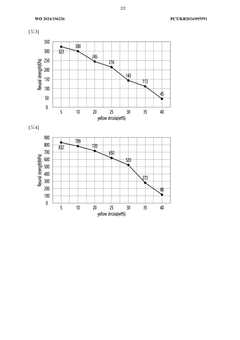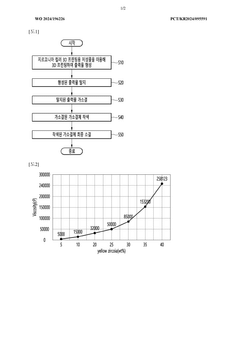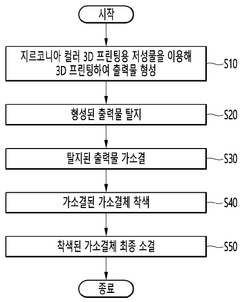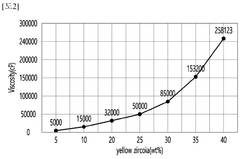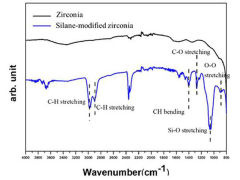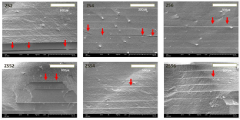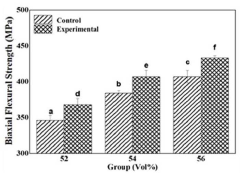How to Utilize Zirconia for 3D Printing Applications?
Zirconia 3D Printing Background and Objectives
Zirconia, a versatile ceramic material, has gained significant attention in the field of 3D printing due to its exceptional properties and potential applications. The evolution of zirconia in additive manufacturing can be traced back to the early 2000s when researchers began exploring its use in dental and medical applications. Since then, the technology has advanced rapidly, driven by the growing demand for high-performance materials in various industries.
The primary objective of utilizing zirconia in 3D printing is to harness its unique combination of strength, durability, and biocompatibility. This ceramic material offers superior mechanical properties, including high flexural strength and fracture toughness, making it an ideal candidate for applications requiring robust and long-lasting components. Additionally, zirconia's excellent resistance to wear and corrosion further enhances its appeal in industrial and medical settings.
As the 3D printing industry continues to expand, the integration of zirconia presents numerous opportunities for innovation and technological advancement. One of the key goals is to develop efficient and reliable printing processes that can consistently produce high-quality zirconia parts with complex geometries. This involves overcoming challenges related to material handling, sintering, and post-processing techniques specific to zirconia-based additive manufacturing.
Another crucial objective is to broaden the range of applications for 3D-printed zirconia components. While the material has already found success in dental prosthetics and certain industrial applications, researchers and engineers are exploring its potential in aerospace, automotive, and energy sectors. The aim is to leverage zirconia's unique properties to create lightweight yet strong structures, heat-resistant components, and customized parts that outperform traditional materials.
Furthermore, the development of new zirconia-based composites and hybrid materials is a significant focus area. By combining zirconia with other materials or incorporating additives, researchers seek to enhance its printability, reduce shrinkage during sintering, and tailor its properties for specific applications. This approach could potentially lead to a new generation of advanced materials that push the boundaries of what is achievable with 3D printing technology.
As the field progresses, there is also a growing emphasis on sustainability and cost-effectiveness. Efforts are being made to optimize material usage, reduce energy consumption during the printing process, and develop recycling methods for zirconia powders. These initiatives align with the broader trend towards environmentally friendly manufacturing practices and circular economy principles in the additive manufacturing industry.
Market Analysis for Zirconia 3D Printed Products
The market for zirconia 3D printed products is experiencing significant growth, driven by the unique properties of zirconia and the expanding applications of additive manufacturing. Zirconia, known for its exceptional strength, durability, and biocompatibility, has found increasing demand in various industries, particularly in healthcare, aerospace, and advanced manufacturing sectors.
In the healthcare industry, zirconia 3D printed products are gaining traction in dental applications. The market for zirconia dental implants, crowns, and bridges is expanding rapidly due to the material's aesthetic appeal, biocompatibility, and mechanical properties. This segment is expected to continue its growth trajectory as more dental professionals adopt 3D printing technologies for customized patient solutions.
The aerospace sector is another key market for zirconia 3D printed products. The material's high-temperature resistance and low thermal conductivity make it ideal for components in jet engines and other high-stress aerospace applications. As the aerospace industry continues to seek lightweight, durable materials for improved fuel efficiency and performance, the demand for zirconia 3D printed parts is projected to increase.
In the field of advanced manufacturing, zirconia 3D printed products are finding applications in tooling and machinery components. The material's wear resistance and thermal stability make it suitable for creating custom cutting tools, molds, and other high-performance parts. This market segment is expected to grow as manufacturers increasingly adopt additive manufacturing for rapid prototyping and small-batch production.
The global market for zirconia 3D printed products is characterized by regional variations. North America and Europe currently lead in terms of market share, driven by advanced healthcare systems and a strong presence of aerospace and manufacturing industries. However, the Asia-Pacific region is expected to witness the fastest growth, fueled by rapid industrialization, increasing healthcare expenditure, and growing adoption of advanced manufacturing technologies.
Market challenges include the high cost of zirconia powders and the complexity of 3D printing processes for ceramic materials. These factors currently limit the widespread adoption of zirconia 3D printing, particularly in price-sensitive markets. However, ongoing research and development efforts are focused on improving material properties, reducing costs, and enhancing printing technologies, which are expected to address these challenges and further expand the market.
As the technology matures and becomes more accessible, new applications for zirconia 3D printed products are likely to emerge. This could include advanced electronics, energy storage devices, and high-performance consumer products. The market is also likely to benefit from the growing trend towards personalized and on-demand manufacturing, which aligns well with the capabilities of 3D printing technologies.
Current Challenges in Zirconia 3D Printing
Despite the promising potential of zirconia in 3D printing applications, several significant challenges currently hinder its widespread adoption and optimal utilization. One of the primary obstacles is the high sintering temperature required for zirconia, typically ranging from 1400°C to 1500°C. This necessitates specialized and expensive equipment, limiting accessibility for many manufacturers and researchers.
The material's inherent brittleness poses another challenge, as it can lead to cracking and warping during the printing and post-processing stages. This issue is particularly pronounced in complex geometries or large-scale prints, where internal stresses can accumulate and cause structural failures.
Achieving consistent and uniform shrinkage during the sintering process remains a significant hurdle. Zirconia parts can experience volumetric shrinkage of up to 20-25%, which can result in dimensional inaccuracies and compromised mechanical properties if not carefully controlled.
The limited availability of zirconia powders specifically optimized for 3D printing applications presents another challenge. Many commercially available powders are designed for traditional manufacturing methods and may not possess the ideal particle size distribution or flow characteristics required for additive manufacturing processes.
Ensuring adequate green strength in printed parts prior to sintering is crucial but challenging. Insufficient green strength can lead to handling difficulties and structural defects, compromising the overall quality and integrity of the final product.
The development of suitable binders and additives that facilitate proper dispersion and binding of zirconia particles during the printing process, while also being easily removable during debinding, remains an ongoing challenge. Striking the right balance between printability and final material properties is essential.
Post-processing techniques, particularly surface finishing, pose significant challenges due to zirconia's hardness and brittleness. Achieving smooth surfaces and precise geometries without compromising the material's structural integrity requires the development of specialized finishing methods.
Lastly, the relatively slow printing speeds associated with current zirconia 3D printing technologies limit production efficiency and scalability. Overcoming this challenge without sacrificing print quality or material properties is crucial for the technology's broader industrial adoption.
Addressing these challenges requires interdisciplinary research efforts, combining materials science, process engineering, and additive manufacturing expertise to unlock the full potential of zirconia in 3D printing applications.
Existing Zirconia 3D Printing Solutions
01 Zirconia synthesis and processing
Various methods for synthesizing and processing zirconia materials, including techniques for controlling particle size, crystalline structure, and purity. This encompasses sol-gel processes, hydrothermal synthesis, and other advanced manufacturing techniques to produce zirconia with specific properties for different applications.- Zirconia synthesis and processing methods: Various techniques for synthesizing and processing zirconia materials, including sol-gel methods, hydrothermal synthesis, and sintering processes. These methods aim to control the crystalline structure, particle size, and properties of zirconia for different applications.
- Zirconia-based dental materials: Development of zirconia-based materials for dental applications, such as crowns, bridges, and implants. These materials offer high strength, biocompatibility, and aesthetic properties suitable for dental restorations.
- Zirconia in catalysis and fuel cells: Utilization of zirconia as a catalyst support or component in various catalytic processes and as an electrolyte material in solid oxide fuel cells. The unique properties of zirconia, such as its oxygen ion conductivity and thermal stability, make it valuable for these applications.
- Zirconia-based composites and coatings: Development of composite materials and coatings incorporating zirconia to enhance mechanical, thermal, and wear-resistant properties. These materials find applications in aerospace, automotive, and industrial sectors.
- Zirconia in biomedical applications: Use of zirconia in various biomedical applications, including orthopedic implants, dental prosthetics, and drug delivery systems. The material's biocompatibility, mechanical strength, and potential for surface modification make it suitable for these medical uses.
02 Zirconia-based composites and coatings
Development of composite materials and coatings incorporating zirconia to enhance mechanical, thermal, and chemical properties. This includes zirconia-reinforced ceramics, zirconia-containing protective coatings, and multi-layer structures for improved performance in various industrial and technological applications.Expand Specific Solutions03 Dental and biomedical applications of zirconia
Utilization of zirconia in dental and biomedical fields, focusing on its biocompatibility, aesthetic properties, and mechanical strength. This covers zirconia-based dental implants, prosthetics, and other medical devices that leverage the material's unique characteristics for improved patient outcomes.Expand Specific Solutions04 Zirconia in fuel cells and energy applications
Implementation of zirconia materials in energy-related technologies, particularly in solid oxide fuel cells (SOFCs) and other energy conversion and storage devices. This includes the development of zirconia-based electrolytes, electrodes, and related components to enhance efficiency and durability in energy systems.Expand Specific Solutions05 Stabilization and phase transformation of zirconia
Research and development focused on stabilizing zirconia in its various crystalline phases and controlling phase transformations. This involves the use of dopants, heat treatments, and other techniques to manipulate the material's structure for specific applications, enhancing properties such as strength, toughness, and thermal stability.Expand Specific Solutions
Key Players in Zirconia 3D Printing Industry
The utilization of zirconia for 3D printing applications is in a growth phase, with increasing market size and technological advancements. The global market for zirconia-based 3D printing is expanding, driven by demand in industries such as healthcare, aerospace, and automotive. Technologically, the field is progressing rapidly, with companies like Tosoh Corp., DIC Corp., and Sumitomo Chemical Co., Ltd. leading in material development. Academic institutions, including Huazhong University of Science & Technology and Korea University Research & Business Foundation, are contributing to research and innovation. The technology's maturity is advancing, with firms like Aidite Technology and Kuraray Noritake Dental focusing on specialized applications, indicating a trend towards more refined and industry-specific solutions in zirconia 3D printing.
Daiichi Kigenso Kagaku Kogyo Co., Ltd.
Tosoh Corp.
Innovations in Zirconia 3D Printing Techniques
- A zirconia 3D printing composition comprising 65-90% zirconia powder, 5-20% reactive monomer and oligomer, 1-15% diluent, 0.1-1% photoinitiator, and optional coloring additives and dispersants, optimized for viscosity and photocuring, allowing for stable printing and sintering with high zirconia content, followed by a multi-stage degreasing, pre-sintering, coloring, and final sintering process.
- A photocurable zirconia composition comprising 70-80% zirconia powder, 10-20% photocurable resin, 5-10% photoinitiator, and 1-5% dispersant, with zirconia powder coated with a silane coupling agent to enhance dispersibility, achieving a high volume fraction and low viscosity, facilitating the production of high-quality ceramic molded bodies with complex shapes.
Material Properties and Characterization
Zirconia, also known as zirconium dioxide (ZrO2), is a ceramic material with exceptional properties that make it suitable for various 3D printing applications. The material properties and characterization of zirconia are crucial for understanding its potential in additive manufacturing processes.
Zirconia exhibits high strength, toughness, and wear resistance, making it an ideal candidate for structural and functional components. Its mechanical properties are superior to many other ceramic materials, with a flexural strength ranging from 800 to 1500 MPa and a fracture toughness of 6-15 MPa·m1/2. These properties can be further enhanced through the addition of stabilizing agents such as yttria, which helps maintain the tetragonal crystal structure and improves the material's overall performance.
The thermal properties of zirconia are also noteworthy, with a low thermal conductivity of approximately 2 W/m·K and a high melting point of 2715°C. These characteristics make zirconia suitable for high-temperature applications and thermal barrier coatings. Additionally, its coefficient of thermal expansion (CTE) is relatively low, ranging from 10.5 to 11.5 × 10-6/K, which contributes to its thermal shock resistance.
In terms of optical properties, zirconia exhibits high refractive index and low light absorption in the visible and near-infrared regions. This makes it an attractive material for optical applications, including dental restorations and optical components. The material's biocompatibility and chemical inertness further expand its potential use in medical and dental fields.
For 3D printing applications, the particle size distribution and powder morphology of zirconia are critical factors. Optimal particle sizes typically range from 20 to 50 μm, with a spherical morphology preferred for improved flowability and packing density. The rheological properties of zirconia slurries or pastes used in various 3D printing techniques, such as stereolithography or direct ink writing, must be carefully controlled to achieve desired print quality and resolution.
Characterization techniques for zirconia in 3D printing applications include X-ray diffraction (XRD) for phase analysis, scanning electron microscopy (SEM) for microstructure evaluation, and various mechanical testing methods to assess strength, hardness, and toughness. Thermal analysis techniques like differential scanning calorimetry (DSC) and thermogravimetric analysis (TGA) are employed to study the material's behavior during thermal processing and sintering stages.
Understanding these material properties and characterization methods is essential for optimizing zirconia-based 3D printing processes and developing high-performance components for diverse applications in aerospace, healthcare, and industrial sectors.
Environmental Impact and Sustainability
The utilization of zirconia in 3D printing applications presents both opportunities and challenges from an environmental and sustainability perspective. Zirconia, a ceramic material known for its durability and biocompatibility, offers potential benefits in terms of resource efficiency and product longevity. The additive manufacturing process inherently reduces material waste compared to traditional subtractive manufacturing methods, aligning with sustainable production principles.
However, the environmental impact of zirconia 3D printing must be carefully considered. The production of zirconia powder requires significant energy input, potentially contributing to carbon emissions if not sourced from renewable energy. The sintering process, essential for achieving the final material properties, also demands high temperatures, further increasing the energy footprint of zirconia-based 3D printed products.
Water consumption in the production and post-processing stages of zirconia 3D printing is another environmental concern. Proper water management and recycling systems are crucial to minimize the impact on local water resources. Additionally, the fine particulate matter generated during powder handling and post-processing may pose air quality risks if not properly controlled, necessitating robust filtration and containment measures.
On the positive side, the precision of 3D printing with zirconia can lead to optimized designs that use less material while maintaining or improving functionality. This optimization potential extends the lifecycle of products, reducing the need for frequent replacements and conserving resources in the long term. The ability to produce complex geometries in a single process also minimizes the need for assembly and reduces transportation-related emissions in the supply chain.
End-of-life considerations for zirconia 3D printed products present both challenges and opportunities. While zirconia is not biodegradable, its durability ensures long-lasting products that resist wear and degradation. Research into recycling methods for zirconia-based 3D printed items is ongoing, with potential for crushing and reprocessing into new feedstock, though energy requirements for such processes remain a concern.
To enhance the sustainability of zirconia 3D printing, several strategies can be employed. Implementing closed-loop material recycling systems within manufacturing facilities can significantly reduce waste. Investing in energy-efficient sintering technologies and renewable energy sources for production processes can lower the carbon footprint. Additionally, developing bio-based binders and exploring hybrid materials that incorporate recycled content alongside zirconia could further improve the environmental profile of 3D printed products.
